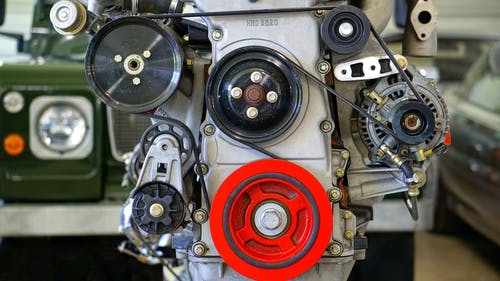Each electric motor has a particular lifespan, usually between 30-40,000 hours of operation. However, this depends on whether they receive the proper maintenance; in the absence of such, they will break down much faster.
“Maintenance” or “maintenance,” or “technical maintenance,” is a set of practices that aim to ensure smooth and uninterrupted operation of various assets, including machinery and equipment. Implementing a reliable maintenance plan is key to the performance and durability of equipment, assets, buildings, and companies.
Preventing Motor Failure
Lack of proper maintenance lowers the life span of equipment, increases the probability of breakdowns and increases the cost of repairs, and slows down production. If you’re aware of the most frequent causes of motor failure and how you can reduce your chance of suffering, one of these issues is to help make your motor last as long as possible.
1. Low Resistance
Low resistance is the most prevalent reason for motor failure, and is perhaps, the most challenging to address. The effects of corrosion, overheating, or damage to the windings could cause the insulation of the windings to weaken and cause low resistance.
Insufficient isolation between the conductors and windings of the motor is the result, which may result in short circuits or leaks and even motor failure. The insulation should be assessed frequently for wear and repaired before the low resistance is enough to cause failure.
The precision balancing services that maintenance companies give include the design and construction of specific equipment for balancing and repairing machines.
2. Overheating
Overheating is a primary reason for 55 percent of motor-related insulation failures. Poor power quality or a high operating temperature could result in overheating. The insulating life of a motor reduces by half every 10 degrees Celsius increase in temperature.
A cool, comfortable working environment can assist reduce motor failures; hence it is imperative that the motor is kept at a suitable temperature.
3. Electrical Overload
An electrical overload or overcurrent occurs when excessive current flows within the motor’s windings. The current flow is higher than the designed current that the motor can handle safely and safely. It could be caused by an insufficient supply voltage which will cause the motor to require more current to maintain its torque. A large amount of electricity may also cause short circuits.
To prevent overloading electrical circuits, it is necessary to install a suitable overcurrent safety device to detect overcurrent and shut off the supply.
4. Vibrations
Vibration may create a wide range of problems with the motor, such as premature failure. The motor will vibrate when placed on an unstable or uneven surface. It is also possible that issues with the motor could cause vibrations, for example, worn or misaligned motors or corrosion.
It is essential to monitor vibration often using an analysis tool. Ensure the motor is placed on a level and solid surface to avoid vibration. There may be wear or misalignment causing the vibration and you should look for these signs. If you cannot identify exactly the cause of the vibration, you may need to consult with an expert.
If low-speed balancing is not used to address vibration issues, mechanical failure may result. To find reliable organizations that do on site rotor balancing, you may either search the internet or ask for referrals.
5. Contamination
Dust, dirt, and chemical contamination are among the most frequent causes of motor failure. Items that come into the motor can cause damage to the ball bearings and raceways, resulting in excessive wear and vibration that could pose a danger. They can also block the cooling fan, reducing the motor’s capacity to control its temperature and increasing the chance of overheating.
Clean all work surfaces such as tools and equipment to limit contamination from getting into the motor. If you can, keep motors away from grinding equipment known to spew large quantities of pollutants.
In order to discover faults in machinery and plan repairs, companies that perform predictive maintenance vibration analysis employ the most advanced technology and computer analysis available.

